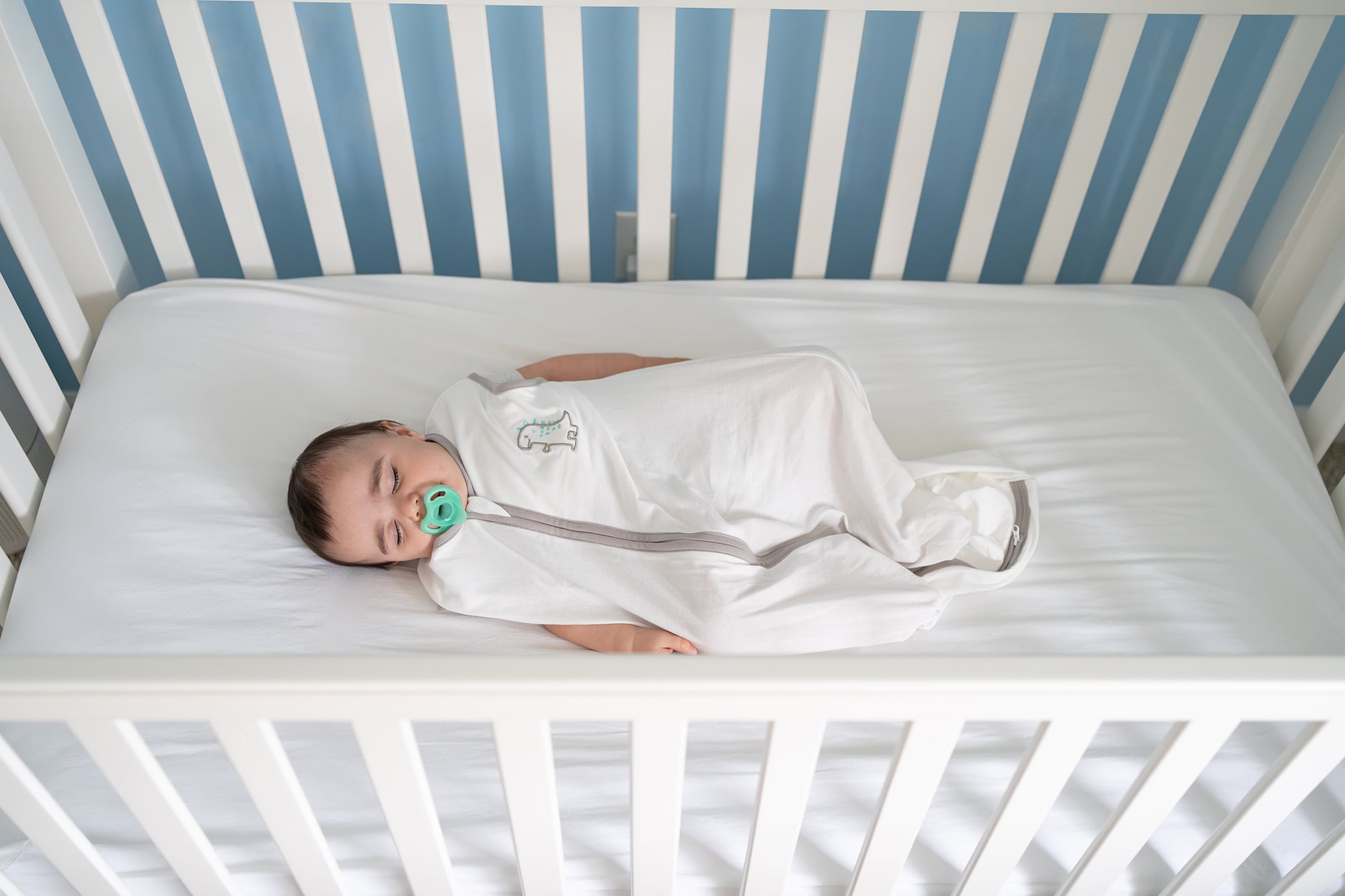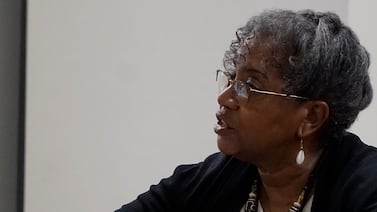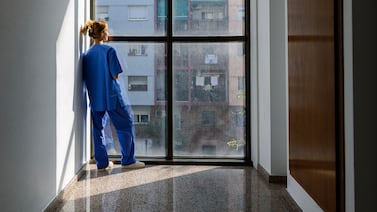Public health, explained: Sign up to receive Healthbeat’s free New York City newsletter here.
At Elmhurst Hospital Center in Queens, new parents head home with more than just a baby.
Upon discharge, families are given a Safe Sleep Toolkit, with resources aimed at preventing infant deaths. There’s a sleep sack, a onesie stamped “This Side Up” — a reminder not to let babies sleep on their bellies — and a pamphlet that lists the ABCs of sleep safety: Alone, on their Back, in a Crib.
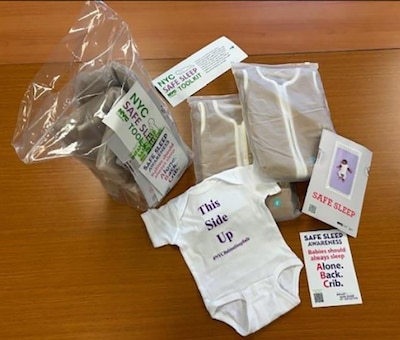
The toolkit program, which piloted in 2018 at Elmhurst and other public hospitals, emerged from a citywide effort to prevent sleep-related infant deaths, and remains a key part of newborn care at the Queens facility.
Still, sleep-related injury deaths among infants continue to present a complex public health challenge for New York City, according to a recent report from the Department of Health and Mental Hygiene. The rate of such deaths has been stagnant for years, and clinicians and advocates say reducing mortality requires not only public education, but also addressing systemic issues like poverty and overcrowded housing.
New York has relatively low rates of infant mortality in comparison to other states, according to data from the Centers for Disease Control and Prevention. While the statewide infant mortality rate decreased from 2016 to 2019, the rate of Sudden Unexpected Infant Death (SUID), which often occurs during sleep, increased by 35%, according to state data.
In New York City, there were 185 sleep-related infant deaths due to injury — a category that includes accidental suffocation and strangulation in bed, an unspecified breathing issue, and undetermined causes — from 2016 to 2020, an average of 37 per year. The Health Department reported 32.9 deaths per 100,000 live births from 2016 to 2020, nearly unchanged from the rate of 32.7 deaths per 100,000 live births from 2012 to 2016.
Clinicians stress the ABCs of infant sleep safety
Elmhurst Hospital Center, part of the NYC Health + Hospitals system, serves one of the city’s most diverse populations. Many families are new arrivals to the United States, with limited health literacy, said Dr. Uday Patil, director of the neonatal intensive-care unit and newborn services.
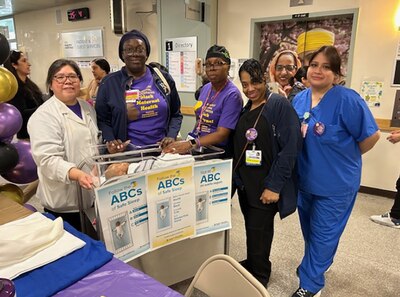
“We feel a greater responsibility to make sure that they start their journey, especially their baby journey, with messages that align with having a healthy baby and a safe sleeping environment,” he said.
The basics of infant sleep safety can be counterintuitive for some families, who want to surround their baby with toys and blankets, or sleep side-by-side. But those practices are dangerous, said Liberty Abelido, the nurse manager of the neonatal ICU at Elmhurst.
Babies should always sleep alone in their cribs, without bumpers or blankets that could lead to suffocation, she said. They should never sleep on their stomachs, which can result in milk blocking their airways. And sharing a bed with an infant can lead to a baby’s accidental suffocation, or to the baby falling. It’s safer to have the baby within reach, but in their own crib, with a firm mattress and fitted sheet.
“If you’re tired, you have to put the baby back to the crib,” Abelido said.
Along with the Safe Sleep Toolkit and community programming around sleep safety, Elmhurst presents parents with a “Safe Babies Commitment Statement.” On the form, a parent indicates awareness of the dangers of shaking infants and young children, as well as the importance of the sleep safety ABCs. Signing the form is optional, but adds a meaningful layer of accountability, said Dr. Randi Wasserman, a neonatologist and director of pediatrics.
“It’s a shared responsibility,” she said.
Safety efforts center ‘harm reduction’
In New York City, sleep-related infant injury deaths reflect divides of race, class, and educational opportunity.
Rates of such deaths are significantly higher for babies born to mothers living in high-poverty neighborhoods, mothers with high school diplomas or less education, and young mothers, according to the city’s report. Additionally, from 2016 to 2020, the rate of sleep-related injury deaths among infants born to Black mothers was four times higher than that of white mothers and Asian and Pacific Islander mothers.
The three-year average infant mortality rate was highest in Brownsville, Brooklyn; Williamsbridge, Mott Haven, and Morrisania in the Bronx; and Jamaica and St. Albans in Queens, according to the city’s data from 2020 to 2022.
When it comes to sleep-related infant injury deaths, the top drivers of mortality include unsafe sleep surfaces or locations, excess bedding, and co-sleeping, according to the city’s report. Those circumstances can sometimes reflect unstable or cramped housing conditions.
Overcrowding is the reality for many families in the Queens neighborhood of Corona, said Rachel Schwartz, the senior director of maternal child health at Public Health Solutions.
“In a two-bedroom apartment, you very commonly have three families living there — an entire family living in one bedroom — and there is no space, literally, for a Pack ‘n Play,” she said.
Among a range of maternal and child health programs, Public Health Solutions provides community education and distributes cribs to local families, Schwartz said. Community health workers and home visitors also work directly with families to help them create safe environments — a form of “harm reduction,” she said.
The goal is to help families balance evidence-based recommendations with the resources that are available, she said, so that infants sleep “as best as possible and as safely as possible.”
Eliza Fawcett is a reporter covering public health in New York City for Healthbeat. Contact Eliza at efawcett@healthbeat.org .

